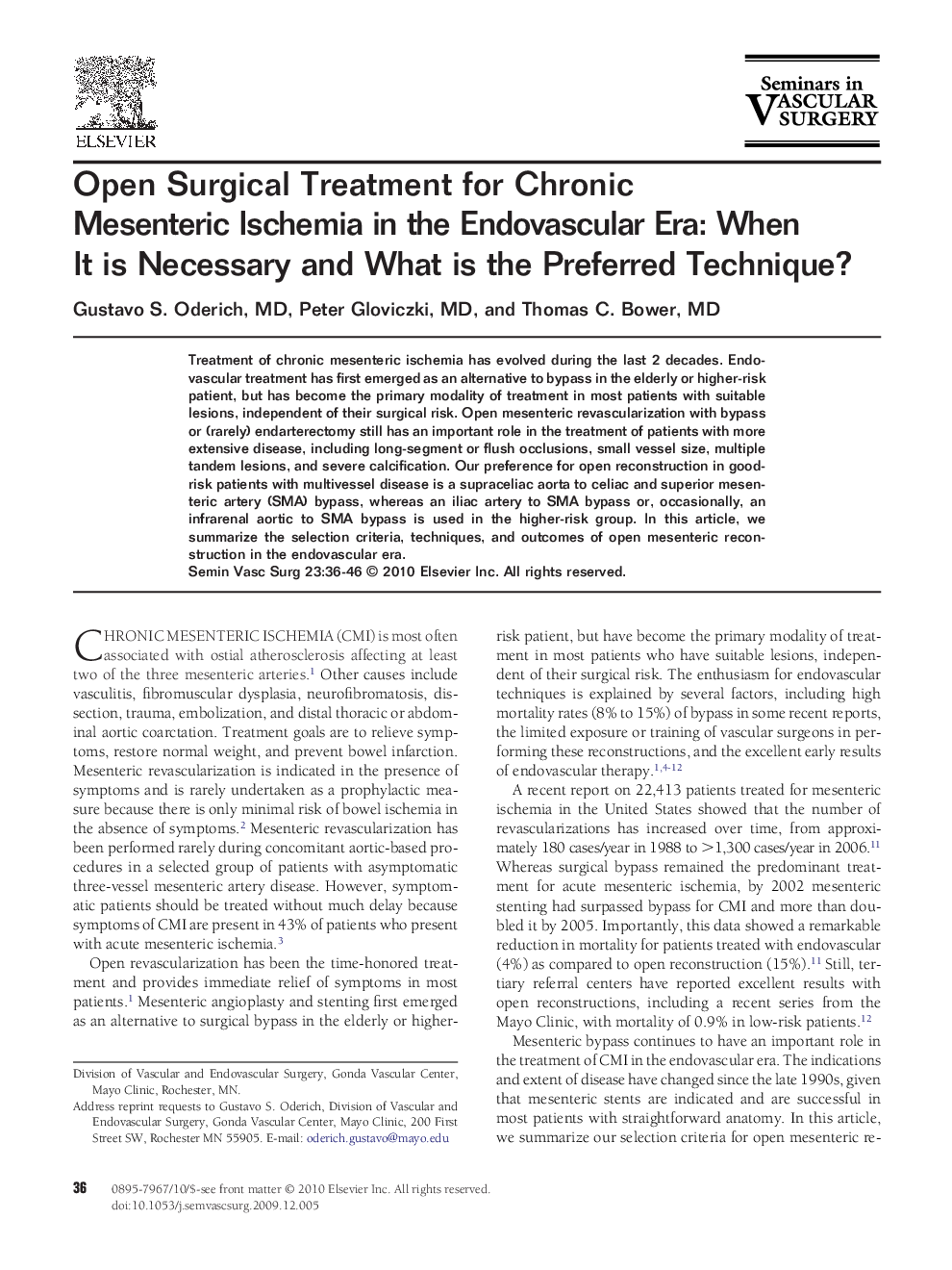| Article ID | Journal | Published Year | Pages | File Type |
|---|---|---|---|---|
| 3026486 | Seminars in Vascular Surgery | 2010 | 11 Pages |
Treatment of chronic mesenteric ischemia has evolved during the last 2 decades. Endovascular treatment has first emerged as an alternative to bypass in the elderly or higher-risk patient, but has become the primary modality of treatment in most patients with suitable lesions, independent of their surgical risk. Open mesenteric revascularization with bypass or (rarely) endarterectomy still has an important role in the treatment of patients with more extensive disease, including long-segment or flush occlusions, small vessel size, multiple tandem lesions, and severe calcification. Our preference for open reconstruction in good-risk patients with multivessel disease is a supraceliac aorta to celiac and superior mesenteric artery (SMA) bypass, whereas an iliac artery to SMA bypass or, occasionally, an infrarenal aortic to SMA bypass is used in the higher-risk group. In this article, we summarize the selection criteria, techniques, and outcomes of open mesenteric reconstruction in the endovascular era.
